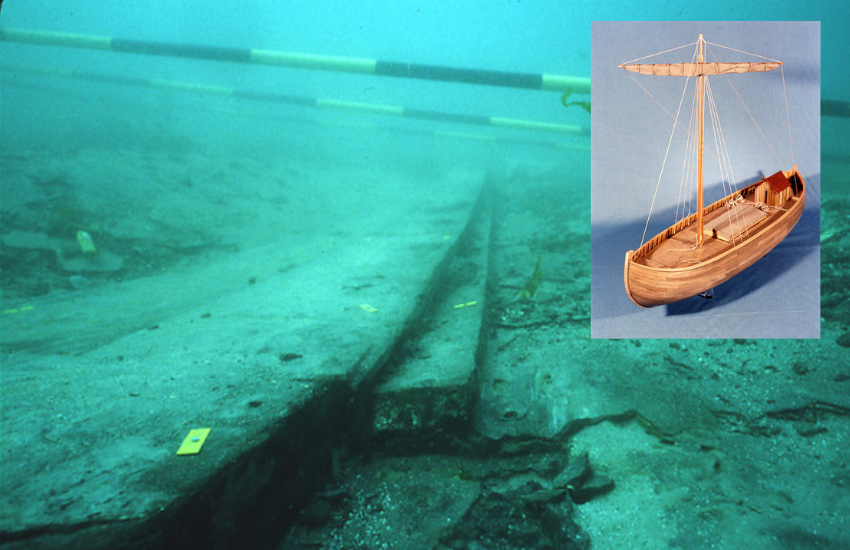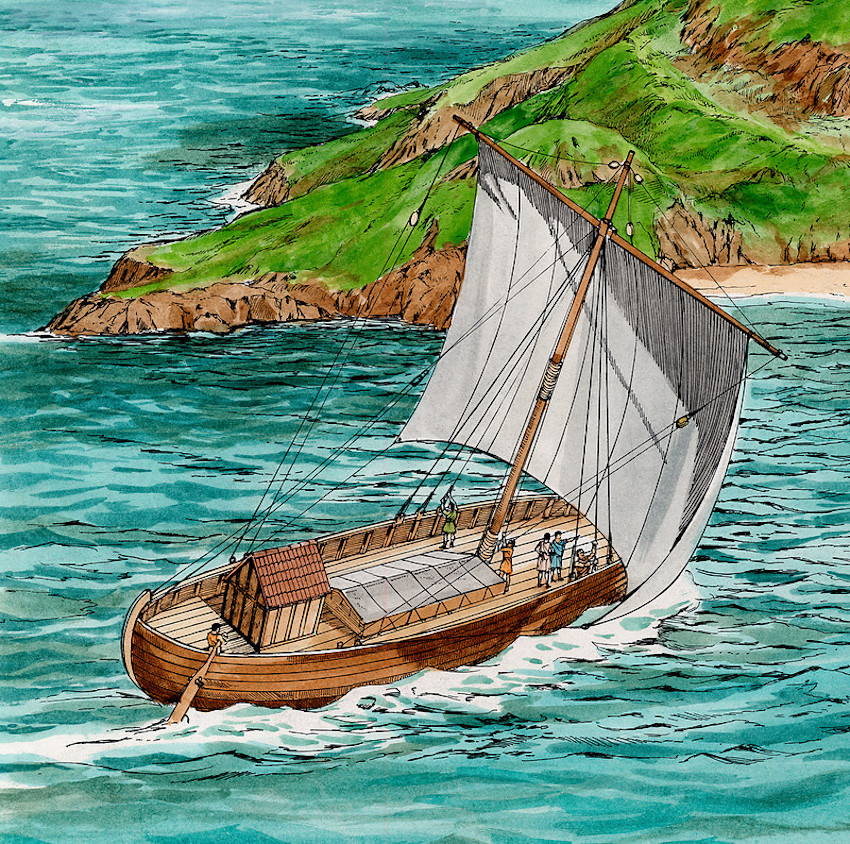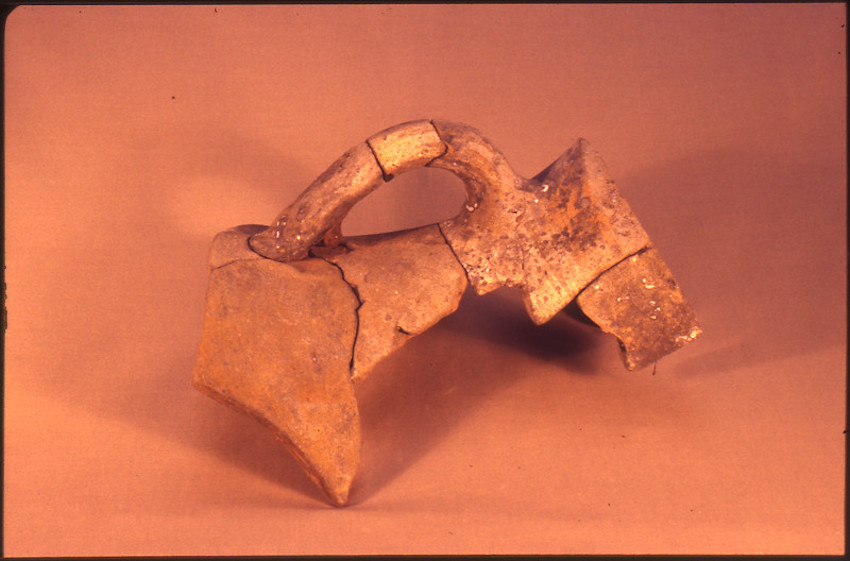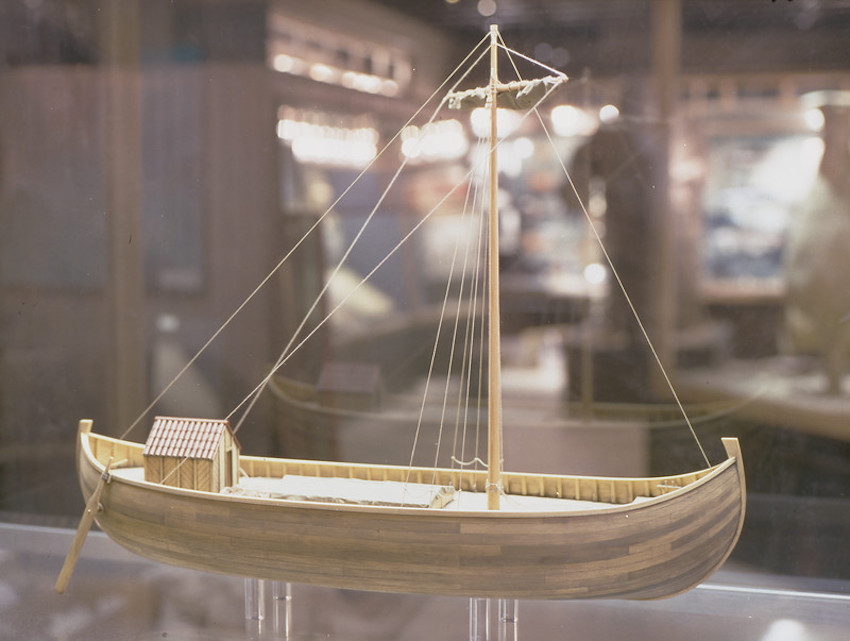


On Christmas Day every year St Peter Port harbour gives up its secrets.
It is the only day you can dive there and with sands shifted by the tides and boat movements, it is a chance for discovery.
In 1982, there was a famous find which has helped give context to Guernsey’s place in the Roman Empire.

Pictured: Timbers from Asterix in St Peter Port Harbour before they were raised from the seabed (Guernsey Maritime Trust).
The shipwreck of what was to become known as the Asterix was discovered by Richard Keen.
Until that point, when coincidentally a Roman Waterfront site was also excavated at La Plaiderie, there was very little to show that the Romans had come to the island.
Asterix caught fire and sunk in around AD280.

Pictured: A Gallo-Roman ship passes Castle Rock, by Brian Byron (image courtesy of Guernsey Museums).
Her timbers lay half way between the pierheads.
Between 1984 and 1987 these timbers, threatened by the daily shipping movements, were raised and recorded by the Guernsey Maritime Trust.
About 18 metres of the original 22m plus bottom of the ship survives, with a maximum beam of 6m. The remains are about a metre high from the keel.

Pictured: Part of the Gallo-Roman wreck Asterix being raised (Guernsey Maritime Trust).
No-one knows the real name of the ship, but she was not constructed in the traditional Roman way but in a Gallic of Celtic manner.
The heavy oak timbers were fastened by iron nails as thick as a thumb and long as an arm. They were butted together without jointing, assembled frame first. She also had a flat bottom.
Similar vessels have been discovered in Blackfriars, London, and at Barlands Farm, Gwent.
They all resemble vessels described by vessels by Julius Caesar in 1st Century BC Brittany.
The Asterix was carrying a cargo of pitch, which when heated up becomes sticky like tar and was used for sealing joints on warships or wine casks.

Pictured: One of the finds (Guernsey Maritime Trust).
The blaze would have been spectacular.
Coins, wooden spoons, gaming counters and pieces of pottery were all found with the ship, as was a Roman tile which may have come from the cabin roof.
The nature of the pottery, which came from locations like Algeria and Germany, suggests that the Asterix was a coaster, carrying cargo from port to port.
Two bronze castings, thought to be part of a pump to bail out water, were also discovered and there was further evidence that fruit stones, walnuts and grains of wheat were burnt.
Fishing hooks and weights, a buckle and evidence of wooden barrels and sail making tool were also among the finds.

Pictured: A Gallo-Roman ship model (Guernsey Musuems).
Asterix is a crucial part of maritime history and demonstrated that the sheltered harbour of St Peter Port played a role in the Roman trade networks just as it had in the Iron Age Atlantic wine trade.
The main timbers are currently on display in the grounds of the Guernsey Pearl and can be seen through a viewing window.
For more on Asterix the Gallo-Roman Ship see museums.gov.gg.
Comments
Comments on this story express the views of the commentator only, not Bailiwick Publishing. We are unable to guarantee the accuracy of any of those comments.